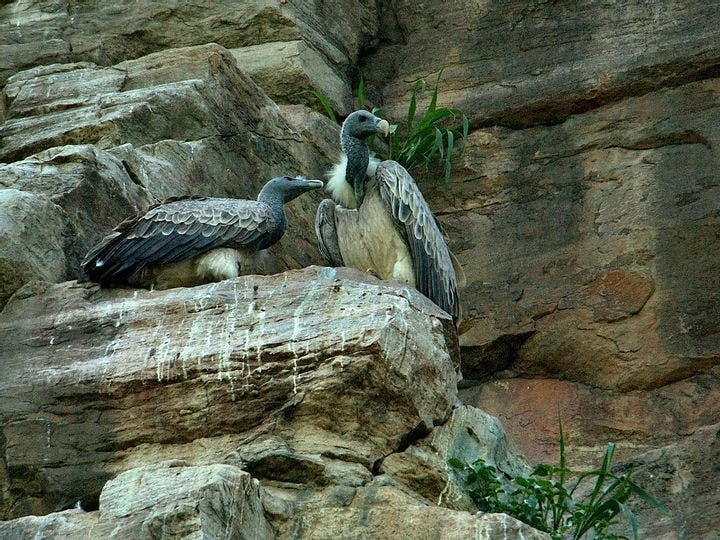Summer 2011
India's Vulture Void
– The Wilson Quarterly
"There were so many vultures then that you can’t even think they could decline."
It's not easy to muster empathy for eaters of the dead. But in India, a precipitous drop in the native vulture population, from 50 million in the mid-1990s to fewer than 60,000 today, has created an environmental and cultural catastrophe. Gone are the creatures that once “scoured the countryside, clearing fields of dead cows and goats,” writes Meera Subramanian, a widely published journalist who is also an editor of the online literary magazine Killing the Buddha. And while other animals, notably wild dogs, have taken over some of the carrion-eating on land, no scavengers can fill the role vultures once performed for the Parsis, the small, ancient religious sect who give their dead “sky burials” in sacred “Towers of Silence.” The massive vultures, their wingspans sometimes reaching eight feet, used to consume the bodies left on open-air scaffolds in a matter of days, but now it can take months for the Parsi dead to decompose.
American microbiologist Lindsay Oaks finally pinpointed the cause of the vultures’ demise in 2003: diclofenac, a painkiller given to farm animals for discomfort from cracked hooves. Vultures gorging on animals treated with diclofenac suffered massive kidney failure. The government banned the substance in 2005, but Subramanian says the law is toothless.
The three prominent species of indigenous vultures, all from the Gyps genus, were once able to consume cattle infected with tuberculosis, brucellosis, foot-and-mouth disease, and anthrax with no ill effects. But with the birds gone, humans now must dispose of such animals themselves, Subramanian writes. The fear is that “these diseases could spread among both animal and human populations.”
Attempts to rebuild the vulture population, chiefly at the Pinjore Vulture Conservation Breeding Center north of Delhi, have met with limited success. Only 17 vultures have been bred in the past three years.
In the northwestern Indian state of Rajasthan, Subramanian visited a carcass dump, a five-acre pile of “dead cows, water buffalo, goats, and camels” brought from nearby Bikaner, a city of half a million. Migrant birds—“mostly Eurasian griffons, bulky steppe eagles, and Egyptian vultures”—come there to feed, but the indigenous Gyps vultures, “hardest hit by diclofenac,” are nowhere to be seen. Wild dogs, though, are everywhere, feeding on the rotting carcasses and, especially when in heat, roaming away from the dumping ground to attack local children. India’s dog population is thought to have increased by nearly a third, to some 30 million. It is no accident that India accounts for 70 percent of human rabies deaths in the world.
And dogs can’t solve the dilemma posed by the Parsi Towers of Silence. The sect has struggled to find an alternative for their burial rituals, from installing solar reflectors to help speed the rate of natural decay, to planning for enormous aviaries stocked with captive vultures. Unfortunately, there is no guarantee that the effect of other painkillers in human corpses would not be lethal to vultures, too. “Vultures play such a beautiful, natural role in our death ritual,” one Parsi leader laments. “To replace them is a unique challenge.”
His words are echoed by Asad Rahmani, head of the Bombay Natural History Society, India’s largest and oldest wildlife conservation organization. “There were so many vultures then that you can’t even think they could decline,” Rahmani said. “What have we done with them? Now there are dogs. They eat anything, live or dead. There are dogs on the ground, but the skies are empty.”
THE SOURCE: “India’s Vanishing Vultures” by Meera Subramanian, in Virginia Quarterly Review, Spring 2011.
Photo courtesy of Flickr/Tarique Sani
